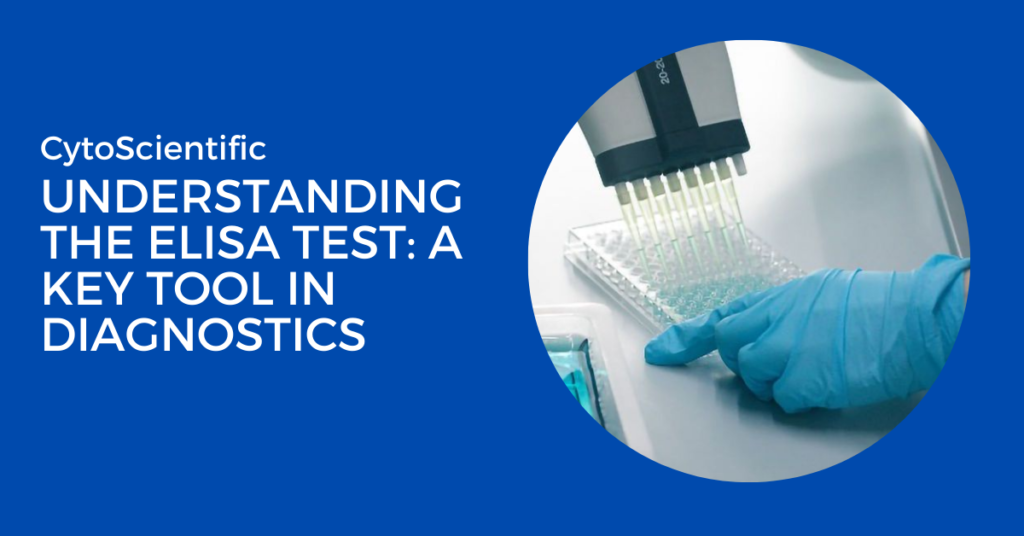The ELISA test, or Enzyme-Linked Immunosorbent Assay, is a laboratory technique used to detect and measure substances such as proteins, antibodies, hormones, or antigens in a sample. It is widely employed in medical diagnostics, research, and various industries to identify the presence or concentration of a specific target molecule.
How Does the ELISA Test Work?
The ELISA test (Enzyme-Linked Immunosorbent Assay) works by detecting and measuring specific molecules such as antigens, antibodies, or proteins in a sample. It relies on the binding interaction between antigens and antibodies, paired with an enzyme that produces a detectable signal, usually a color change. Here’s a step-by-step explanation:
- Coating: The well plate is coated with the antigen or antibody.
- Blocking: Non-specific sites are blocked to prevent unwanted reactions.
- Binding: The sample containing the target molecule is added, allowing it to bind with the coated antibody or antigen.
- Detection: A secondary antibody linked to an enzyme is added, which binds to the target.
- Signal Generation: A substrate reacts with the enzyme, producing a measurable signal (e.g., a color change).
What is the ELISA test used to diagnose?
HIV/AIDS
The ELISA test plays a crucial role in diagnosing HIV (Human Immunodeficiency Virus), the virus that causes AIDS (Acquired Immunodeficiency Syndrome). By detecting antibodies or antigens in the blood, it helps identify the presence of the virus, often at an early stage.
How the ELISA Test Works for HIV Diagnosis
- A small blood sample is collected from the patient, usually from a vein.
- The sample is applied to a plate that is coated with HIV antigens, which are specific proteins related to the virus.
- If the sample contains HIV-specific antibodies, they will bind to the antigens on the plate.
- A secondary antibody, linked to an enzyme, is added to the plate. This antibody binds to the HIV-specific antibodies, forming a complex.
- A substrate is introduced to the plate, and if the enzyme-linked antibody is present, it reacts with the substrate, causing a color change.
- The results are interpreted: a color change indicates the presence of HIV antibodies or antigens, while no color change suggests a negative result.
- Positive results are usually confirmed with further tests like the Western blot or PCR to ensure accuracy.
COVID-19
The ELISA test has been a critical tool in the fight against COVID-19, helping to detect the presence of antibodies or antigens related to the SARS-CoV-2 virus, which causes COVID-19. It is widely used for diagnostic purposes, monitoring immunity, and understanding infection spread.
How the COVID-19 ELISA Test Works
- A blood or serum sample is collected from the patient for antibody testing, while nasal or throat swabs may be used for antigen testing.
- The sample is applied to an ELISA plate coated with SARS-CoV-2 antigens or antibodies, depending on the type of test being performed.
- If specific antibodies or antigens are present, they will bind to the coated surface on the plate.
- A secondary enzyme-linked antibody is added, along with a substrate that reacts with the enzyme, leading to a color change.
- This color change indicates the presence of SARS-CoV-2 antibodies or antigens.
- If no color change occurs, the result is considered negative.

